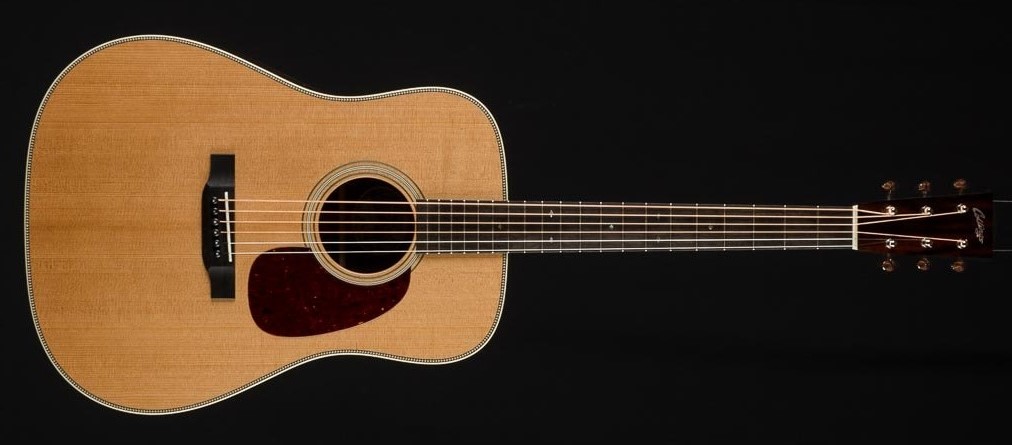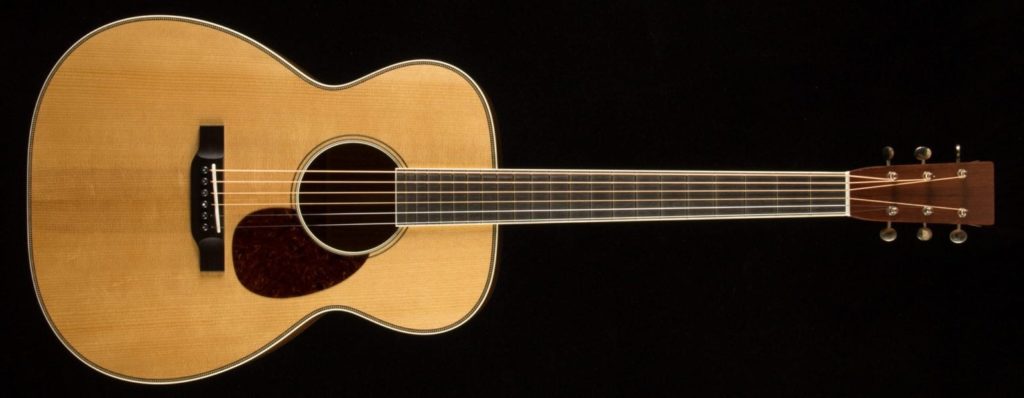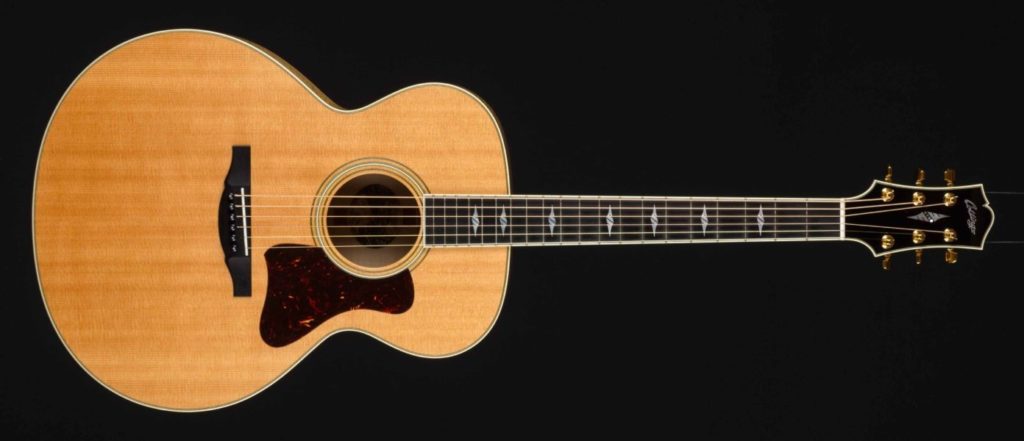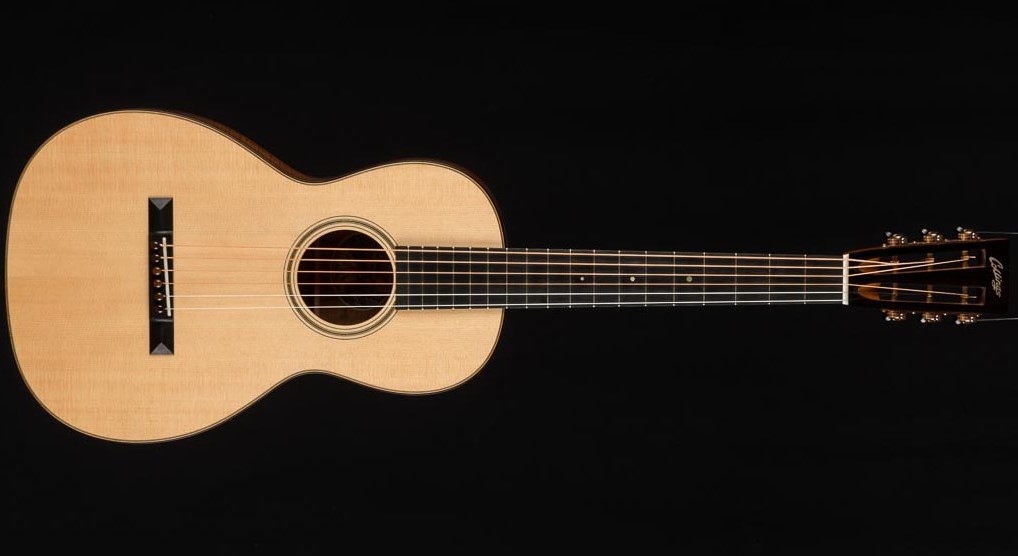How to Find the Right Body Size When Shopping for A Guitar
Shopping for an instrument brings about many considerations for our customers: the look, the feel, the price, the sound, etc. We’ve heard it all before. At Down Home Guitars, we believe that one of the best places to start your decision-making journey is with the fact that influences almost every other aspect: the body size.
In order to help you out, we’ve assembled the only guide you will ever need to better understand what separates the different body sizes of guitars. We aim to cover the variations in practicality, sound, size, and shape of each body size to help make the best recommendation for all your playing needs! So let’s get to it.
Dreadnought

Easily one of the most common and recognizable acoustic guitar body sizes in the world, the dreadnought style has been copied many times over since its inception. Being the largest size at the time of its inception in the early 20th century, it was aptly named after the HMS Dreadnought warship in the British Navy (the largest ship during World War 1). These guitars are incredibly versatile and can be used for almost any size of genre or musical performance. This body type is much bigger than most others, which gives these guitars a considerably louder and richer tone. The original model was released by CF Martin in the early 1900s and typically consists of more rounded shoulders with a neck that meets the body at the 12th fret. As the demand for a higher register increased, a squared shoulder version where the neck meets the body at the 14th was created and quickly became the standard model. Made very popular through country and pop artists in the last half-century, this guitar continues to be one of the most popular body sizes on the market.
Squared Shoulder Dreadnought
Despite having a variety of dreadnoughts in stock, we thought we’d show you one of our favorites for the squared shoulder body type: the Collings D2H Torrefied Sitka Spruce and Indianwood. The D2H is the flagship Rosewood dreadnought of the Collings line with a torrefied (baked) Sitka Spruce top. Although its bass response makes this dreadnought ideal for vocal accompaniment, this D2H Rosewood and torrefied Sitka combination is perfect for the demand of bluegrass flatpickers who must compete with inherently louder instruments such as banjos and fiddles. View more product details here!
Sloped Shoulder Dreadnought
In terms of the sloped shoulder dreadnoughts, a fantastic example would be the aptly named Martin LE HMSD 2015 Special Edition Dreadnought. This Limited-Edition Martin LE model depicts the sinking of German U-Boat SM U-29 by the HMS Dreadnought by artist Robert Goetzl, printed on a Sitka spruce top with Martin’s Vintage Tone System (VTS). Other features of this 12-fret Dreadnought model include genuine mahogany back and sides, East Indian rosewood headplate, and a black ebony fingerboard and bridge. View more product details here!
OM

The OM, or the “Orchestra Model”, is a slightly smaller body size than the dreadnought with a more focused mid-range and a warmer and more present bass. It is one of the most popular body sizes today with the versatility and comfort for multiple playing styles. Originally called the orchestra model because it was the guitar best suited for the studio and the stage. Its 14th fret design is commonly found in long and short scale configurations. Initially popularized in the 1930s, this guitar saw a rebirth in the ’90s as it was featuring in the performance of Eric Clapton’s MTV unplugged. You can see it in the hands of many different musicians like John Mayer, Lyle Lovett, Tommy Emmanuel, and many more.
For the OM Fans out there, you can’t go wrong with the Bourgeois OM LSH Panamanian Rosewood and Aged Tone Adirondack Custom. This is a large sound hole OM version of Dana Bourgeois’ “Panama Red D AT Aged Tone”. Huge tone and balance in a rare body configuration. Premium Aged Tone Adirondack Spruce top and braces and Premium Panamanian Rosewood back and sides with extra-large sound hole for that amazing clarity and punch. View more product details here!
“00” / “000”

Originally designed in a similar style to the classical guitar body type where the body meets the neck at the 12th fret, this size is generally more shallow with rounded shoulders and has a shorter scale length which translates to smaller fret sizes. The 00 measures at around 14 3/8″ at the lower bout, while the 000 comes in closer to 15 1/4″. Normally these guitars come in a 12 fret configuration, but it’s not completely uncommon to find some in the 14 fret style. If you struggle with fretting chords and are looking for a light touch guitar to really focus your sound, these tend to be more fingerstyle friendly. This body size has an excellent mid-range register.
00
We think that a great example of a high quality yet still affordable boutique 00 is the Huss & Dalton 00-SP Sinker Mahogany and Engelmann Spruce. The 00 12 fret design is a timeless build, perfect for the fingerstyle player, parlor player and the strummer looking for a comfortable lap guitar. They short scale slotted head wonder features a wonderful set of figured Sinker Mahogany from Belize paired with a white Engelmann Spruce top. Balance, clarity and focus define this players guitar.
000
Our selection for one of the larger 000 is the Huss & Dalton 000-SP Custom Sinker Redwood and Figured Claro Walnut. A great tone wood combination, Sinker Redwood and Walnut produce a wonderful clear and balanced tonal spectrum perfect for the discerning fingerstyle player as well as strummers. Great with alternate tunings like open chord D or G blues , drop D or DADGAD for celtic, this custom 000 short scale from Huss & Dalton in Virginia will be hard to put down. View more product details here!
Jumbo

The Jumbo body shape is typically the largest member of the acoustic guitar family. It brings an in-your-face punch of volume & tone that you can feel and hear. The bottom bout is 16″ or larger across, allowing for more surface area inside the guitar. This causes the sound to reverberate longer and create a bolder tone that smaller guitars are unable to match. This classic body type has extra pronounced curves that help create much heftier low-end sounds.
Our Jumbo top pick goes to the Collings SJ Short Scale Flamed Maple and Sitka Spruce. This is a full, robust and sweet sounding Collings SJ Small Jumbo. The Flamed Maple back, sides and neck give it a clear, bright mid-range and highs while the short scale gives it the perfect scale length to easily pull tone out of this beauty. We also ordered this with a custom 1 3/4″ nut width for the perfect feel. View more product details here!
Parlor / “O”

Parlor guitars are some of the smallest size guitars available on the market. They date all the way back to before the American Civil War and gained prominence in the Victorian-era parlor rooms of the mid-1800s. They generally measure under 13.5″ at the lower bout and are designed to be comfortable for anyone to play. Favored by blues and folk musicians in the early 1900s, they have come to their own acclaim in the modern era for indie and folk artists for their mid-range tone, historic nature, and portability. Sometimes called a “0”, it is a smaller body than its “00” or “000” counterpart. The guitar’s neck tends to join the body at the 12th fret, making it ideal for finger pickers. These features help to create a smaller and less intrusive playing feel and experience.
A great example of a modern parlor guitar would be the Collings Parlor 1 T Figured Koa and Sitka Spruce. Crafted with Collings’ Traditional series appointments, features, and voicing techniques, the Collings Parlor 1 T T is built with premium Flamed Hawaiin Koa back and sides and Sitka Spruce top with vintage appointments. It has a full-bodied voice and projection that belies its small size. Includes a handmade case designed and built in the Collings shop. View more product details here!
In Conclusion
Sometimes it’s a journey to find what body size and tonewood selection you are looking for. If you’re not sure what is best for you, have one of our experienced sales staff help you find your dream guitar. Call us at (815) – 469 – 6321 or email Steve@Downhomeguitars.com.
Now we want to hear from you: comment down below what your favorite body sizes are. Which ones are you looking to try next? And what else you would like for us to cover in our next blog?

No comments so far. Be first to leave comment below.